Photograph Albums
Early photographs were one-of-a-kind images, created as positive pictures for which no negative existed. With no negative from which to create duplicate copies, photographs were treated like miniature paintings, to be individually framed and displayed.
With the advent of new technology that produced a negative from which multiple prints could be made, photographs became objects to share widely with family and friends. This, in turn, created a need for new forms of display and storage. Elegant albums with pages specifically designed to hold these photographs became popular in the United States around 1860 when commercial photographers began aggressively marketing them. By 1864, Godey’s Lady’s Book announced, “Photograph albums have become not only a luxury for the rich but a necessity for the people. The American family would be poor indeed who could not afford a photograph album.”
These early albums served an important purpose during a time when the population of the United States was experiencing dramatic changes. Large numbers of people were moving west, drawn by the promise of prosperity and independence. During the 1860s, the Civil War ravaged the American population, and it was followed by a flood of immigrants from all corners of the globe. Families were broken up, often never to reunite. These new photograph albums were how people kept the family circle together.
As improvements in transportation and communication made the separation by a long distance less daunting, the focus of photograph albums began to change. In the late 1880s, Kodak introduced lighter-weight photographic prints that could be pasted directly on the pages of an album and, as photograph albums changed to accommodate these new “snapshot” images, people began to incorporate memorabilia along with the photographs. The family photograph album became autobiographical, capturing events such as birthdays, weddings, and vacations more than individual loved ones, and the line between scrapbooks and photograph albums blurred.
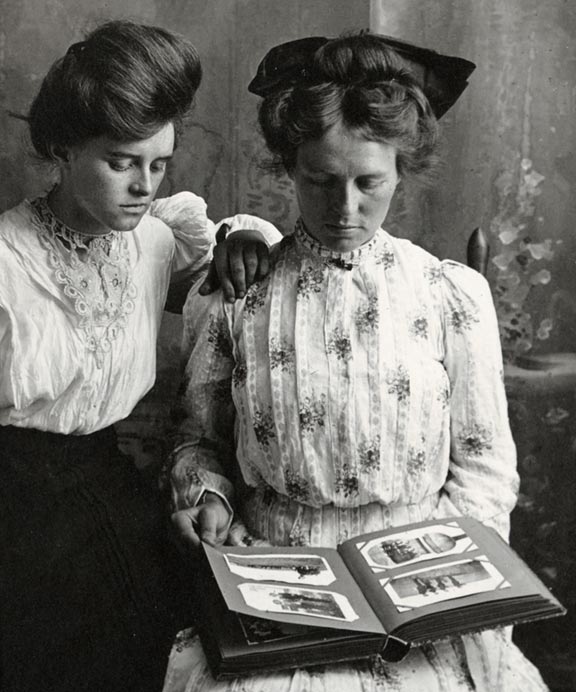
Unidentified women looking at photograph album, about 1907-1917. Photographer John Nelson, Ericson, Nebraska. (RG3542.PH69-02)
William B. Watson, Porter
William B. Watson was born in Missouri about 1853 and came to Nebraska sometime in the late nineteenth century to live in Omaha. He worked as a porter and had four daughters with his wife Luella. He died in Omaha in 1942 at the age of ninety.

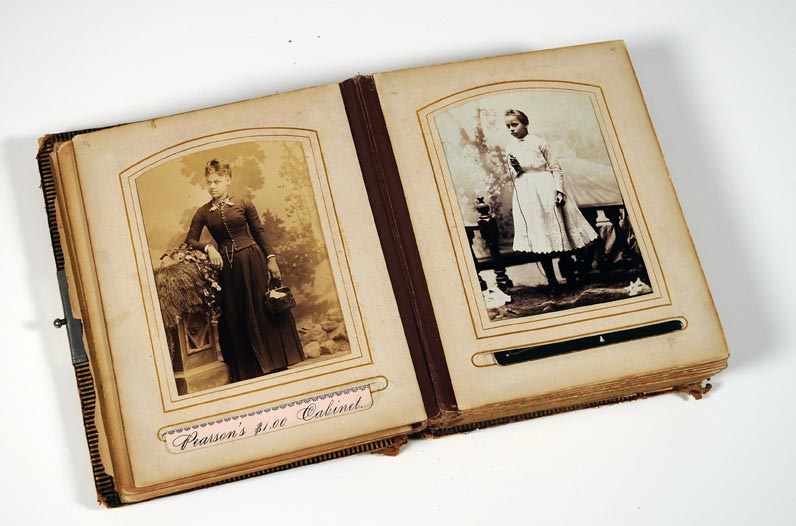
Before snapshots, photograph albums were designed to accommodate the more substantial formats of tintypes or studio portraits mounted on a card. This kind of album left the owner little opportunity for creativity. Ownership of such albums and the images that they held transcended race, education, and socioeconomic background.
Margaret and Edward Gehrke, Adventurers
Margaret “Maggie” May Patton was born in Chicago in 1883 and at an early age, she and her mother moved to Nebraska. She met and married Edward Arthur Gehrke in 1905. Five years later she graduated from the University of Nebraska.
Edward was born in Seward County in 1880. He became a successful contractor and real estate agent, building an estimated 300 Craftsman-style houses in Lincoln and becoming known as ” The Bungalow Man.” Edward died in 1939 and Maggie in 1978.
Edward and Maggie were adventurers, traveling extensively throughout the United States and Canada by car during a time when it truly was an adventure. Edward photographed their travels and Maggie kept engaging and descriptive travel journals. Together their photo albums and journals provide a fascinating glimpse into the challenges and rewards of these adventures.
In the fall of 1916, Ed and Maggie took what Maggie titled their “Thousand Mile Motor Trip thru Western Nebraska.”
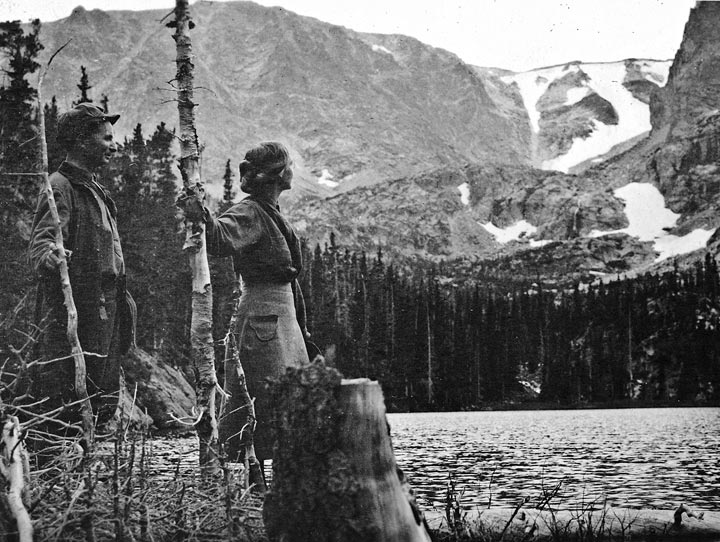
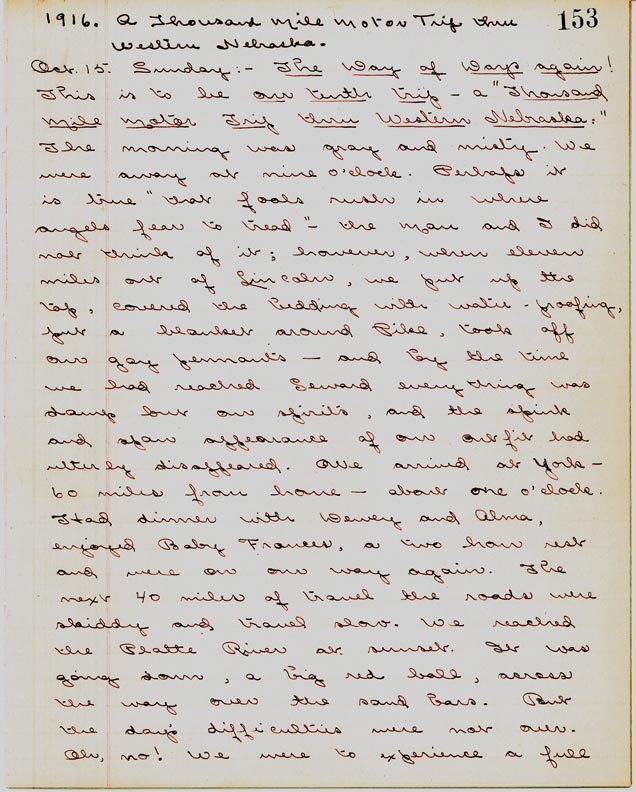
Oct. 15. Sunday: The Day of Days again! This is to be our tenth trip — a thousand mile motor trip through Western Nebraska. The morning was gray and misty. We were away at nine o’clock. Perhaps it is true “that fools rush in where angels fear to tread” — the Man and I did not think of it; however, when eleven miles out of Lincoln, we put up the top, covered the bedding with water-proofing, put a blanket around Pike, took off our gay pennants — and by the time we had reached Seward everything was damp but our spirits, and the spink and span appearance of our outfit had utterly disappeared. We arrived at York — 60 miles from home — about one o’clock. Had dinner with Dewey and Alma, enjoyed Baby Frances, a two hour rest and were on our way again. The next 40 miles of travel the roads were skiddy and travel slow. We reached the Platte river at sunset. It was going down, a big red ball, across the way over the sand bars. But the day’s difficulties were not over. Oh, no! We were to experience a full measure of the motorist’s calamities! We ran the car in on what looked to be a hard stretch of level sand near a pleasant meadow-and stuck! The rear wheels ground in and sunk with every turn! We got out and deliberated on the next move; but plainly the Buick would not move for sometime. It was cold, night was coming, we were wet and tired from a hundred miles of hard travel. We put up the tent near the car on wet sand and the Lady hastened to make hot tea-blessed reviver of spirits! With the beds made and supper, the situation looked more cheerful-how we are tied by the physical. Next we went out and looked at the car; water was starting to seep in around the wheels and it was still going down a little from its own weight-in all probability before morning a ChinaMan would reach up from the other side and pull it thru! So unlike President Wilson we decided to act at once. We first found some planks near the bridge and dragged them up to the car, then the Man proceeded to “jack” the rear wheels up, while the Lady carried the light around, brought tools, and encouraged the Man with lies that the car was nearly level when it wasn’t! At eleven o’clock the brave little Buick was planked out on the solid ground again, and we went to bed. Thus ended the First Day of the Thousand Mile Motor Trip at Camp No. 1 “Sinky Sand.”
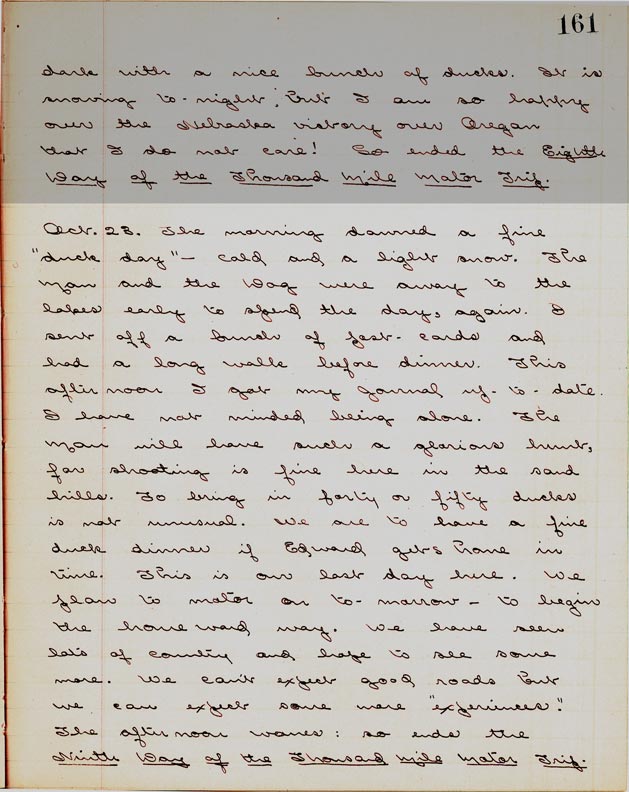
Oct. 23. The morning dawned a fine “duck day”-cold and a light snow. The Man and the Dog were away to the lakes early to spend the day, again. I sent off a bunch of post-cards and had a long walk before dinner. This afternoon I got my journal up-to-date. I have not minded being alone. The Man will have such a glorious hunt, for shooting is fine here in the sand hills. To bring in forty or fifty ducks is not unusual. We are to have a fine duck dinner if Edward gets home in time. This is our last day here. We plan to motor on to-morrow — to begin the homeward way. We have seen lots of country and hope to see some more. We can’t expect good roads but we can expect some more “experiences.” The afternoon wanes: so ends the Ninth Day of the Thousand Mile Motor Trip.
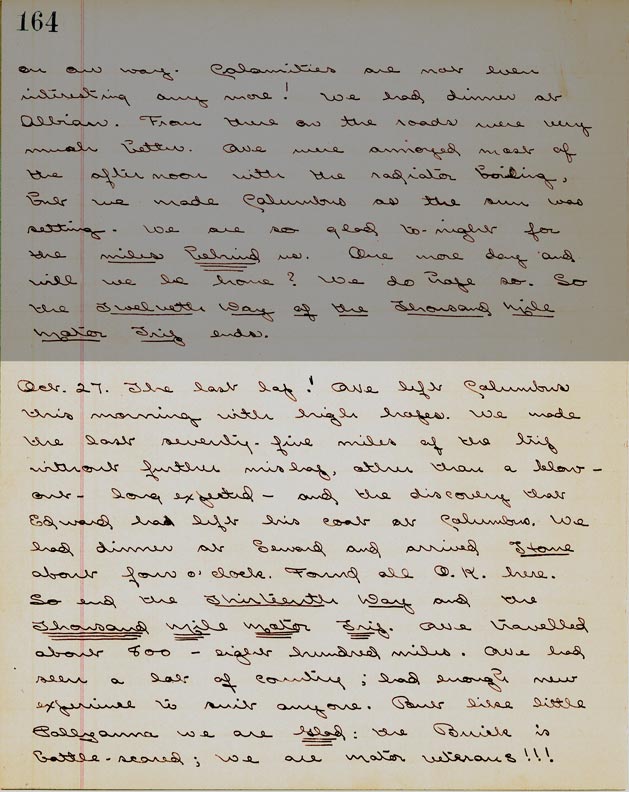
Oct. 27. The last lap! We left Columbus this morning with high hopes. We made the last seventy-five miles of the trip without further mishap, other than a blow-out — long expected — and the discovery that Edward had left his coat at Columbus. We had dinner at Seward and arrived Home about four o’clock. Found all O.K. here. So end the Thirteenth Day and the Thousand Mile Motor Trip. We traveled about 800 — eight hundred miles. We had seen a lot of country; had enough new experience to suit anyone. But like little Pollyanna we are Glad: the Buick is battle-scared; we are motor veterans!!!
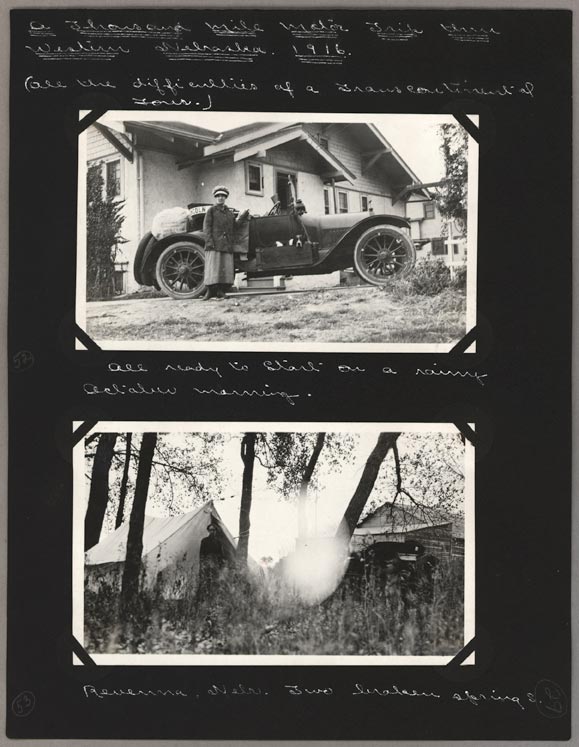
A Thousand Mile Motor Trip thru Western Nebraska. 1916.
(All the difficulties of a Transcontinental Tour.)
All ready to start on a rainy October morning.
Revenna, Nebr. Two broken springs.
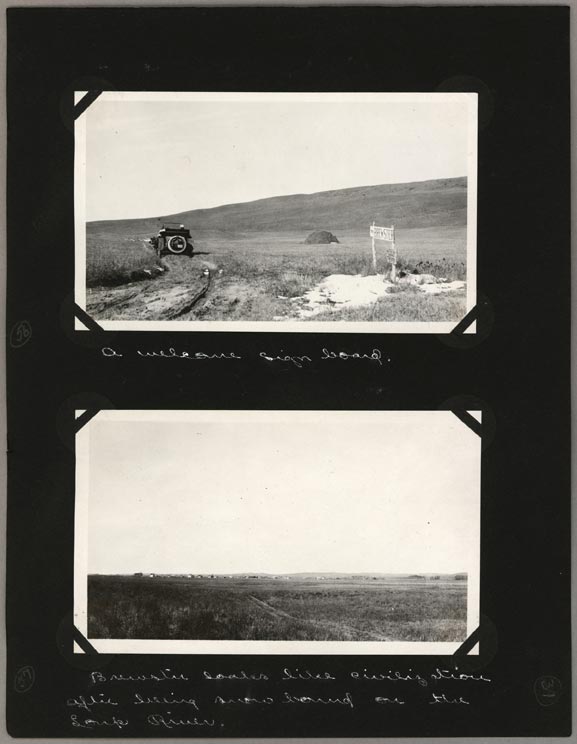
A welcome sign board.
Brewster looks like civilization after being snowbound on the Loup River.
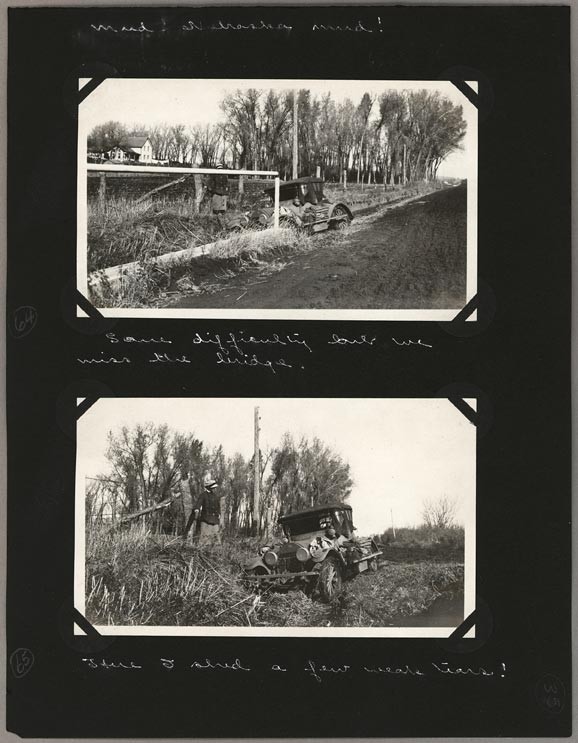
Mud! Nebraska Mud!
Same difficulty but we miss the bridge.
Here I shed a few weak tears!
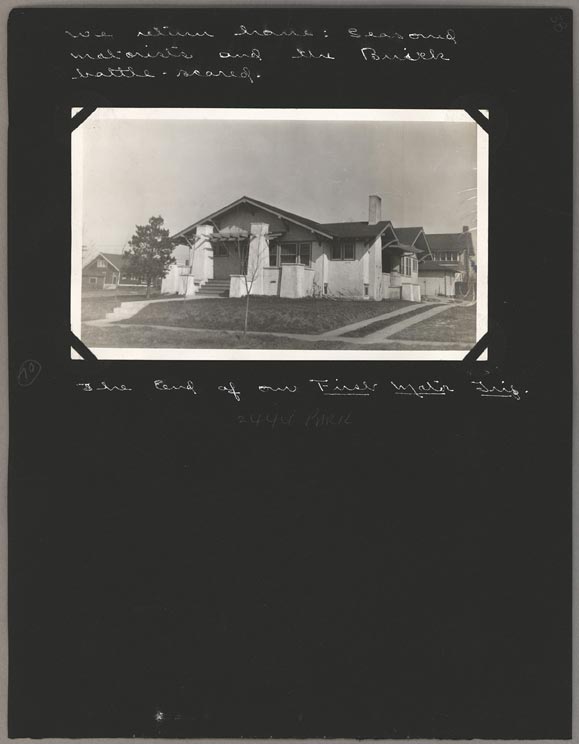
We return home: Seasoned motorists and the Buick battle-scared.
The end of our First Major Trip.
Nan Aspinwall, Entertainer
Nan Jeanne Aspinwall Gable Lambell was born in New York in 1880. She lived in Liberty, Nebraska for most of her early years, although she would later claim to have been raised on a cattle ranch in Montana.
By 1899 Nan was performing as “Princess Omene,” an oriental dancer. Sometime in either 1905 or 1906, she began appearing as the “Montana Girl,” an expert horsewoman, sharpshooter, and lariatist. In 1906 she was billed — along with husband Frank Gable — as a “Lariat Expert.” They performed with the combined Buffalo Bill’s Wild West and Pawnee Bill’s Far East Troupe. Later, she and Frank had their own vaudeville show, Gable’s Novelty Show, until Frank’s death in 1909. Nan died in 1964.
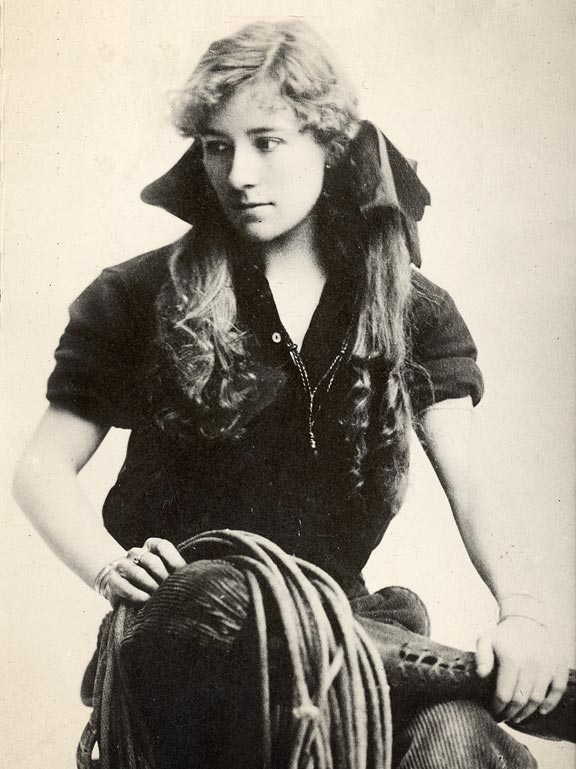
Nan Aspinwall (RG3513.PH6-4f)
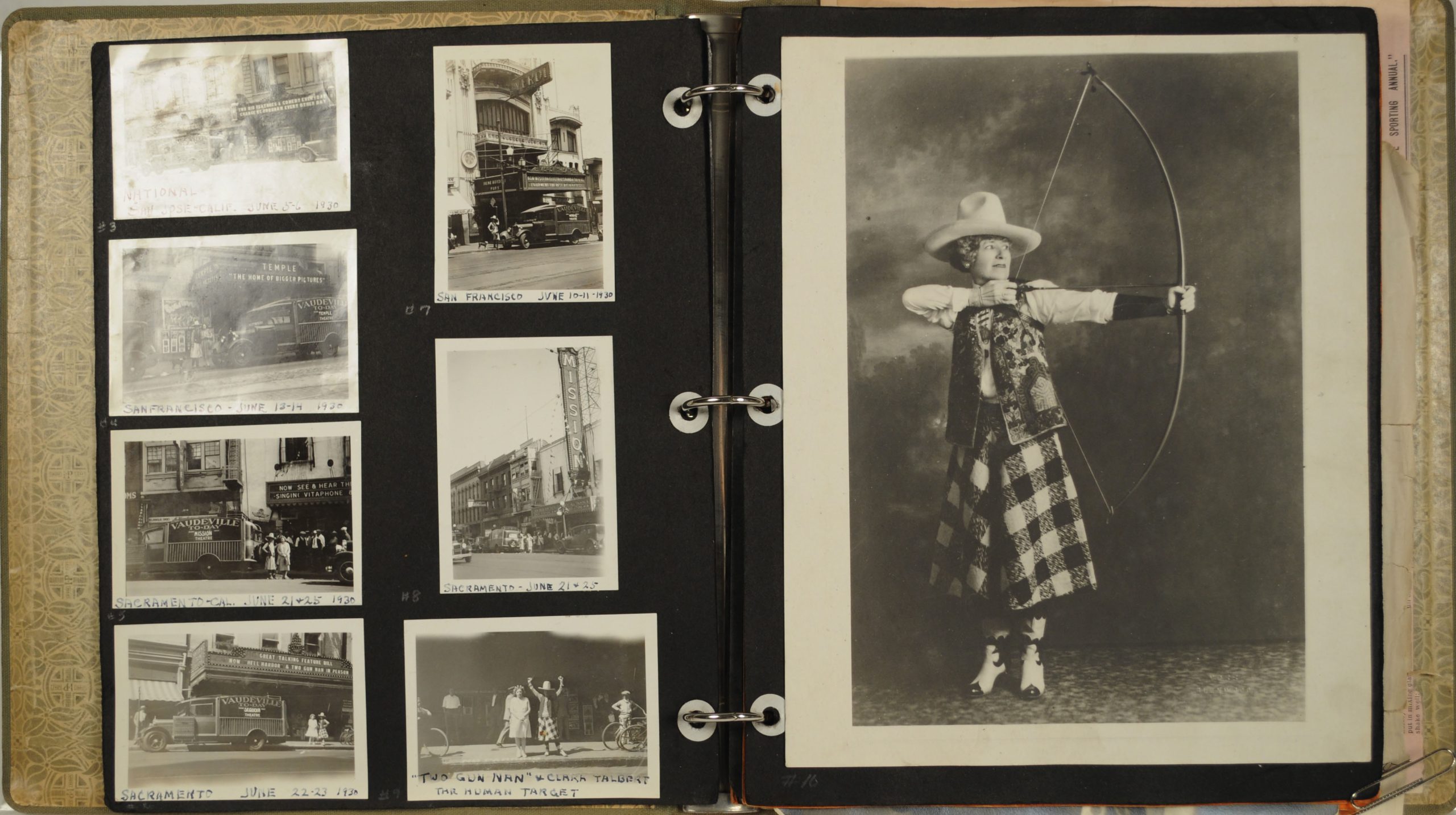
Photographs and mementos of Nan Aspinwall’s career as an oriental dancer, a sharpshooter, and a vaudeville act fill six scrapbooks in the History Nebraska collections. The girl who rode horseback from San Francisco to New York and back in 1911 on a bet from Buffalo Bill led a colorful life that produced no shortage of material to fill these volumes.
Frances Margaret Creech, Musician
Frances Creech was born in Bellwood, Nebraska, in 1912. In the late 1940s, she became a member of an all-woman band headlined by Ruth Colman. Performing under a variety of names, Ruth Colman’s All Girl Orchestra, the Sweethearts of Swing, and Ruth Colman’s Polka Queens, the band barnstormed its way across the country. Creech was co-owner of the band, played piano, and was the group’s business manager. After the band’s breakup, Creech taught piano in Lincoln. She died in 1999.

Frances Creech (RG5372.PH)
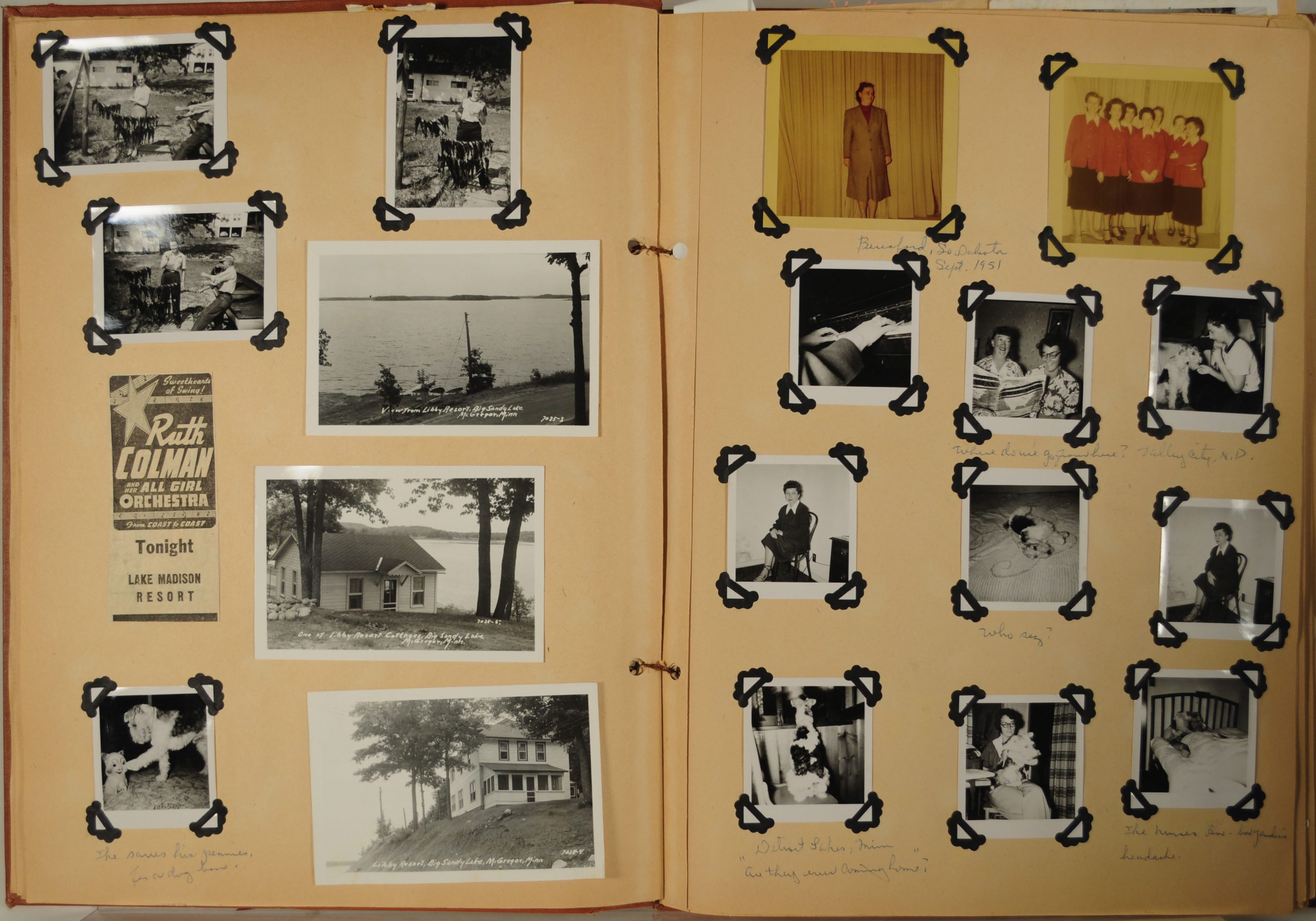
Frances’s six scrapbooks document the travel and performances of Ruth Coleman’s band from 1945 through 1947. Primarily filled with photographs of the members of the band on the road, they also include publicity materials and souvenirs of the places where they stayed, ate, and played.



